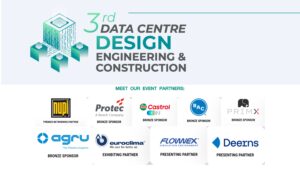If we look at professionals in infrastructure, the whole conversation is squarely on the capacity crisis that is straining the UK data centre grid. Looking past the headlines, we see an industry that is grappling with the explosive demand of AI going into physical constraints. So, this collision is pushing a total change in how we approach planning, engineering, & construction across the country. We have gone from simply optimising operations to essentially changing the asset itself for survival/sustainability. Consequently, project leaders now demand hyper-specific, actionable insights that address this crucial situation. So, this article goes through the four significant pivots currently underway. It includes everything from securing power independence and mastering extreme density cooling to handling sustained compliance mandates and using new macro-siting logic.
The UK Grid Crisis: Engineering Decentralized Power Independence
The immense need for computer power to support AI is placing a significant burden on the UK’s legacy power infrastructure. Coping with limited grid capacity has emerged as the greatest challenge for future growth for more than 90% of industry experts. So, this part dives into the critical engineering/financial strategies to get power independence and stabilize the volatile UK data centre grid:
Designing Dual-Fuel Systems for Mandated Hydrogen Conversion and Operational Decarbonization
We must now design backup power systems with mandated decarbonization obligations firmly in mind. There must be a transition beyond conventional diesel generators to infrastructure designed for hydrogen fuel readiness. In addition, as an engineer, this means specifying dual-fuel capability, ensuring special storage arrangements, and adding the necessary ventilation systems to accommodate future required hydrogen blend rates. UK trials, such as the one at Brigg Energy Park in Sept. 2025, have already shown that existing gas infrastructure can handle a hydrogen blend. As a result, it shows a clear/viable pathway for giving low-carbon and reliable electricity. Integrating this readiness tends to be the essence of a Hydrogen-Ready Data Centre Design UK strategy. It shifts the backup generation need from pollution control to mandated decarbonization readiness. This helps to manage capacity pressure on the UK data centre grid itself. So, this first step is a complete energy transition for backup power.
Executing Large-Scale Battery Energy Storage Systems (BESS) for Grid Stabilization & DSR Profitability
BESS installation is no longer just about giving microseconds of uptime protection. It now shows a major revenue opportunity and a core element of grid resilience. Moreover, large battery banks allow facilities to engage in a profitable manner in demand-side response schemes. This is selling stored power back to the grid at the peak times or drawing power when it tends to be cheapest. The engineering issue involves:
- Precise sizing for optimal output,
- Implementing complex temperature control systems to ensure battery longevity and safety,
- And achieving seamless integration with both the Uninterruptible Power Supply (UPS) systems and the main utility connection.
This layered power architecture not only avoids local power fluctuation but also makes the facility a strategic asset in stabilizing the strained UK data centre grid. This secures both resilience and a revenue stream.
Developing Technical and Financial Models to De-Risk Speculative Building Against Extended National Grid Connection Delays
Developers see immense financial pressure at a time when demand outpaces utility delivery. It leads to fully constructed but power-stranded speculative buildings. To de-risk this, modeling must move from simple power factor planning to include phased utility connection timelines and the connected cost penalties. Additionally, the core issue comes from the time mismatch: facility construction takes about two years, but the necessary transmission/generation upgrades need five or more years. Technically, this mandates a modular construction approach. It should allow IT capacity to deploy in smaller increments using localized/temporary power. This hedges against the grid’s phased upgrade schedule. This strategic mitigation is also crucial for managing capital and avoiding the costly reality of completed assets being stranded without high-capacity power coming from the UK data centre grid.
Navigating the Planning and Regulatory Process for the Co-location of Small Modular Reactors (SMRs) with Hyperscale Facilities
Nuclear power, especially SMRs, gives the preferred long-term solution for providing stability/low-carbon power that is independent of national grid congestion. However, co-locating SMRs with hyperscale facilities needs advanced regulatory navigation. Furthermore, developers must secure large-scale sites, manage complex regulatory compliance that often involves the NSIP regime (Nationally Significant Infrastructure Projects), and make sure of proper security protocols for nuclear assets. Moreover, unique engineering challenges include:
- Ensuring high levels of security,
- Securing access to vast volumes of cooling water,
- And ensuring the stable, always-on supply for hyperscale compute, directly addressing the core capacity issue on the UK data centre grid.
Additionally, this intersection of nuclear policy & infrastructure development shows the cutting edge of power strategy.
The AI Design Paradigm: Structural and Thermal Management for Extreme Density
The enormous demand for Generative AI has stretched classical design beyond its limits. This compels rack densities to reach 150kW and beyond. This huge computational density necessitates a structural/thermal overhaul. Therefore, this section goes through the seminal engineering modifications that are necessary to support this high-density revolution, including cooling, structure, fire, & power delivery standards:
Civil Engineering Requirements – Designing Reinforced Flooring Compliant with BS 4994/BS 5500 for 4-Metric-Ton Immersion Cooling Tanks
The widespread adoption of immersion cooling reveals a significant structural challenge for the builders. One large cooling bath, when it is filled with dielectric fluid & IT equipment, weighs over four metric tons. Thus, this static load far surpasses the requirement for normal data hall flooring in a significant way. In addition, civil engineers are particularly required to design reinforced floor slabs and adopt materials that are compliant with UK construction standards. This comprises BS 5500 for pressure vessels or BS 4994 Immersion Cooling Structural Compliance for non-metallic tanks & vessels. This is a fundamental civil engineering requirement that dictates site viability, especially for greenfield construction. Also, ensuring BS 4994 Immersion Cooling Structural Compliance in advance avoids devastating structural failure upon deployment. It is the point of departure for a successful AI data centre cooling application. This is also indispensable to safeguard the UK data centre grid against interruption
Advanced Retrofit Feasibility – Integrating Direct-to-Chip (DTC) Cooling Pipework into Existing London Brownfield Infrastructure
Retrofitting existing facilities, particularly in saturated London, provides enormous value. However, it also requires extremely intricate engineering. Direct-to-Chip cooling is often a preferred option as it minimizes the requirement for a full structural redesign when put in comparison to immersion. Additionally, the difficulty lies in incorporating intricate pipework and manifolds into the limited existing space. Critically, present air-cooled heat rejection systems generally require additions, such as the addition of an adiabatic assist. It enables the acquisition of lower supply water temperatures that DTC systems require at maximum efficiency. Second, this transition is required to provide space for high-density AI workloads in vintage facilities. It provides them with a second life and also converts them into hubs prepared for AI data centre cooling.
Fire Mitigation – Using Compact In-Rack Fire Suppression (e.g., NOVEC/FM200) as a Non-Structural Protection Layer for High-Value Cabinets
Conventional room-level fire protection systems are not equipped to absorb the speed/concentration of fire in closely packed & high-power AI racks. Moreover, the answer is in localized/non-structural protection. Compact, 2U on-rack suppression units that reside right inside the cabinet are used by engineers. These rely on clean extinguishing agents like NOVEC or FM200. It traces the air & food that react immediately upon discovery. This architecture also bypasses the need for large external cylinders and major modifications to the building. Thus, this permits rapid installation (in days) and keeps protection traveling with the asset. Additionally, this real-time/focused response is imperative when it comes to safeguarding high-value AI compute assets against instant thermal events.
Standardization and Scale – Implementing Open Compute Project (OCP) Rack Standards to Optimize Power Delivery and Network Fabrics for AI Clusters
Hyperscalers are normalizing systems, racks, & power supply with standards such as the OCP to deal with increasing rack power density. Further, usage of OCP paves the way for shared abstractions for power busways and standardized rack interfaces. As a result, this reduces Total Cost of Ownership (TCO) by enabling operators to quickly mix and match diverse GPUs and accelerators. Additionally, for the network, OCP dictates the high-capacity/predictable latency network fabrics (switching and interconnects) that are crucial for distributed AI workloads to work as a single computing element. This standardization also helps high-efficiency AI data centre cooling systems. It ensures the infrastructure can expand quickly & flexibly to meet the changing AI demand.
Post-Compliance Resilience: Sustained Regulatory Obligations and Accelerated Planning
With the mandatory deadlines for DORA & NIS2 now passed, the UK sector’s emphasis shifts completely to consistent compliance management and ongoing audit readiness. New regulatory pathways for crucial infrastructure are also live but remain largely untested in the field. So, this section goes through the post-compliance environment, exploring how engineering teams must combine regulatory requirements with physical design choices:
Sustained DORA Compliance – Engineering Physical Infrastructure for Ongoing Audit, Testing, and Third-Party Resilience Reporting
The DORA deadline passed, moving the focus to increased/intrusive regulatory engagement. Infrastructure must now support continuous testing, auditing, & resilience reporting. So, this mandates coordination across business continuity, cybersecurity, & third-party risk management; they cannot work in silos. Moreover, engineering teams must make sure that verifiable, testable protocols are combined into physical systems rather than simply documented. This helps to withstand the scrutiny of national and EU supervisors. Additionally, this perpetual resilience framework needs system architects to design for full transparency and ease of audit across power, cooling, & network redundancy.
Post-Implementation NIS2 Mandates – Integrating Physical Access Controls and Infrastructure Hardening Against Cyber-Physical Threats
NIS2, which has made data centers fall into the category of essential entities, imposes an all-hazards approach when it comes to risk management. This requires that physical security engineering directly address preparedness against cyber-physical risks. So, this means executing:
- Advanced physical access control systems,
- Robust perimeter hardening,
- And network segregation strategies to prevent a digital attack from leading to physical operational disruption.
As non-compliance carries the risk of major fines, combining in-depth physical hardening techniques with the digital security posture is now paramount, a non-stop engineering need.
Navigating Untested Planning Pathways – De-Risking the Novel NSIP Regime and Expediting Approvals in AI Growth Zones (AIGZs)
CNI designation allows large-scale projects to opt into the NSIP regime. It bypasses local planning for the Secretary of State determination. While this move streamlines approvals, the use of NSIPs for data centers, along with development on new sites such as AI Growth Zones (AIGZs), makes for a largely untested concept in the UK. Furthermore, developers must use specialist expertise to go through these novel concepts and mitigate the risk of changes in regulations occurring in the middle of the project. Additionally, successfully using these accelerated avenues is important for speeding up the use and addressing the chronic pressure on the UK data centre grid.
Achieving the IET Gold Rating: Establishing Frameworks for CUE, WUE, and Environmental Performance Certification
The Institution of Engineering and Technology (IET) proposed bronze, silver, & gold ratings to embed environmental sustainability when it comes to development. Achieving gold requires going beyond the single PUE metric. It should include in-depth sustainability scores such as Carbon Usage Effectiveness & Water Usage Effectiveness. CUE measures the sustainability of the source of energy. Meanwhile, WUE measures the efficiency of water usage. Moreover, this holistic framework, driven by moral & commercial responsibility, attracts investment. It also tends to be important for operators aiming to compete with verifiable sustainability credentials. This is a new mandate for AI data centre cooling systems. It pushes engineers to look at the full environmental impact of high-density thermal solutions.
Circularity and Macro-Siting: New Construction Logics
Physical constraints and net zero targets are pushing a major geographical shift in where/how data centers are made across the UK. New construction logic puts focus on circular economy principles & standardized deployment to get rid of rising costs and skill shortages. This section goes through the highest-value macro-siting and construction innovations:
Thermal-Grade Planning for DESNZ Zoning – Engineering Cooling Systems to Guarantee Stable, High-Quality Heat Output (40-60°C)
The Department for Energy Security and Net Zero (DESNZ) is making the regulatory framework for heat network zoning in England. This will make connection a necessary condition for new consent in defined areas. This needs data centre heat zoning expertise. Furthermore, engineers must move from simply rejecting low-grade heat to optimising cooling loops for thermal-grade planning. To supply district heating networks, the output temperature needs to be on the high side and stable. This is typically 40-60°C. Moreover, achieving this needs careful cooling loop optimization and also includes industrial heat pumps. Additionally, this emphasis on data centre heat zoning transforms the facility into an energy source. This makes it fall in line with the UK’s goal of raising district heating provision to 20% and pushing the commercial viability of data centre heat zoning.
The Strategic Case for Regional Clusters – Utilizing Clean Power Surplus and Secure Subsea Cable Connectivity in Greater Manchester and Scotland
The London market stands to be constrained by land scarcity and power limitations, and regional growth is prime for the UK data centre grid. Consequently, developers are targeting regional clusters such as Greater Manchester. It offers available land and secure subsea cable connectivity. Furthermore, Scotland stands to be highly attractive for hyperscale owing to its rich renewable energy surplus and robust grid connectivity. It offers a clear-cut advantage for large power loads. Additionally, this strategy bypasses the main constraints that affect the UK data centre grid in the South East. it delivers low-latency solutions to underserved UK regions. So, this is a fundamental change in macro-siting logic driven by utility access, not just latency.
Modular Rapid Deployment (RDC): Using Prefabricated Construction as a Strategic Hedge Against Long Lead Times for Critical Power Components
Long lead times for crucial power components like generators & cable trays have doubled in many instances. This has led to major construction delays and increasing costs. Modular rapid deployment (RDC) is a strategic defense, making use of pre-engineered/pre-fabricated modules built off-site. Furthermore, this method allows developers to secure & deploy robust solutions within aggressive time periods. As a result, it minimizes the financial impact of supply chain volatility. Additionally, RDC allows for staged deployment, decoupling the IT capacity installation from the extended connection timeline of the grid. This approach is significant for managing capacity risks. It also complements efforts to make a Hydrogen-Ready Data Centre Design UK by allowing phased power upgrades.
Water Usage Effectiveness (WUE) as a Constraint – Designing Waterless or Closed-Loop Cooling Systems Based on Local Water Availability in England
The industry must adopt Water Usage Effectiveness as a primary design constraint. This is particularly true in water-scarce regions of England. While generally thought to be water-thirsty, TechUk reports 51% of the UK locations surveyed actually use waterless cooling systems, refuting the myth. Designers must also favor closed-loop or fully waterless systems. They should modify cooling strategies based on the prevailing local climate to be in line with the sustainability objectives and receive continuous planning approval. Such WUE compliance is a new benchmark in advocating for sustainable data centre heat zoning. It will make sure that digital growth is not against public water supplies and maintain the industry’s green credentials.
To Sum Up
The UK data centre network requires radical/specialised engineering solutions to address the needs of this AI age. We have seen that it is certain to achieve power autonomy with Hydrogen-Ready Data Centre Design UK and SMRs, but the transition to high-density cooling requires special structural conformity, such as BS 4994 Immersion Cooling Structural Compliance. In addition, post-compliance requirements have to be audited continually, and new macro-siting choices are made based on the profitability of Data Centre Heat Zoning and green power availability. Thus, excelling at these complicated technical/strategic turns determines who effectively scales within this limited market.
If you wish to advance your technical knowledge, gain insights that are rare and applicable these days, ensure you participate in the 3rd Data Centre Design, Engineering & Construction Summit on 2nd-3rd December 2025 in London, UK. Read more about the summit and book your spot now!




